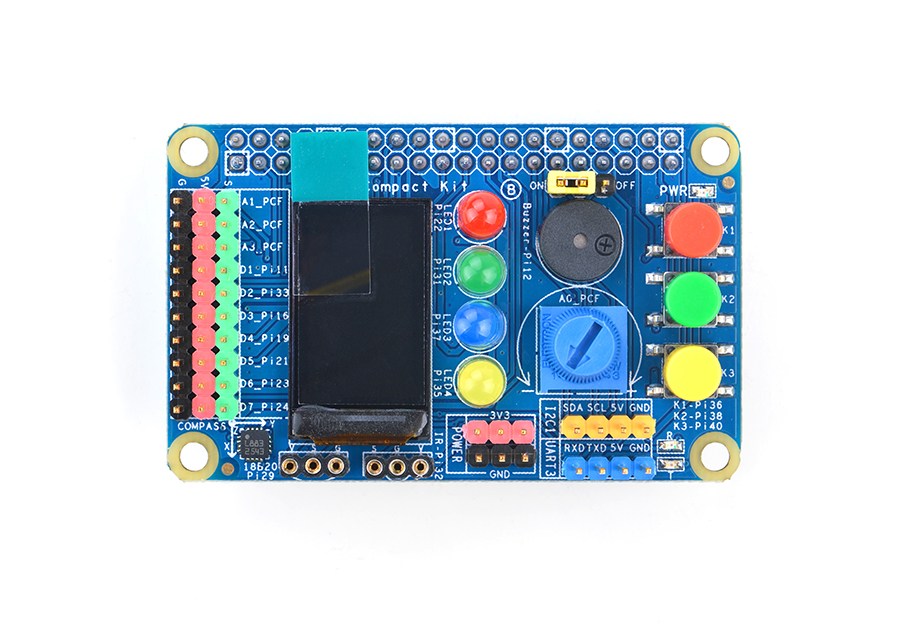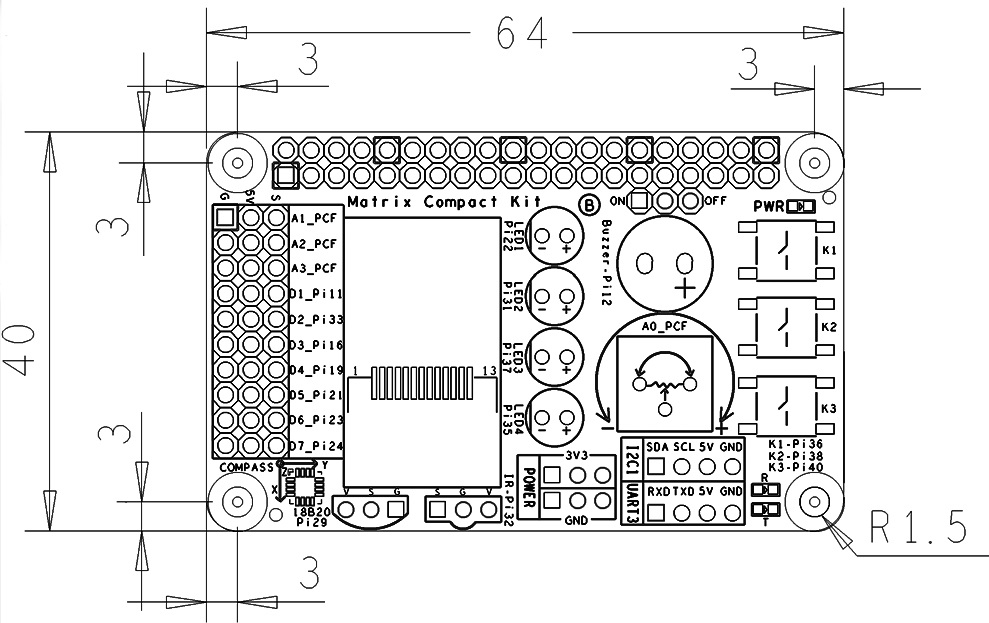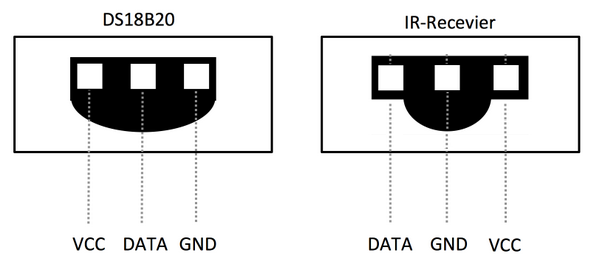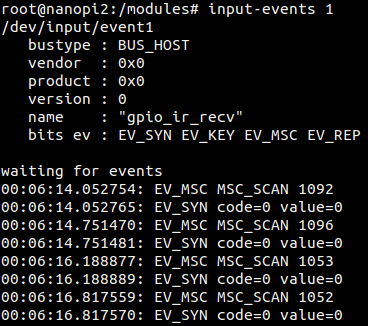Difference between revisions of "Matrix - Compact Kit B"
(→拷贝测试程序) |
(→测试LCD显示) |
||
| Line 173: | Line 173: | ||
</syntaxhighlight> | </syntaxhighlight> | ||
| − | === | + | ===Test LCD=== |
| − | + | Insert this TF card to your NanoPi 2 Fire, power on and run the following commands.<br> | |
<syntaxhighlight lang="bash"> | <syntaxhighlight lang="bash"> | ||
$ cd /modules | $ cd /modules | ||
| Line 180: | Line 180: | ||
$ sudo FRAMEBUFFER=/dev/fb-st7735s startx & | $ sudo FRAMEBUFFER=/dev/fb-st7735s startx & | ||
</syntaxhighlight> | </syntaxhighlight> | ||
| − | + | "fbtft_device" is the LCD's driver.After it is loaded the LCD will be initialized.<br> | |
| − | + | "startx" sets the LCD to the output device. Here is what you should expect:<br> | |
[[File:03.jpg|frameless|600px|03]] | [[File:03.jpg|frameless|600px|03]] | ||
Revision as of 03:12, 23 May 2016
Contents
1 Introduction
- The Matrix Compact Kit B is a FriendlyARM developed compact board with various hardware resources, interfaces and ports. It contains user keys, LEDs, buzzer, ADC, compass, temperature sensor, IR receiver and TFT interface. It works with FriendlyARM's NanoPi 2 Fire and NanoPi M2 via its 40 pin male connector and is compatible with Raspberry Pi and Arduino boards. In addition you can connect various devices to its IO pin-header.
2 Features
Matrix - Compact Kit B contains the following components:
- 0.9 TFT LCD
- 3 x Switch
- 4 x 5mm LED
- Buzzer
- ADC
- Potentiometer
- 40pin Female Connector
- 4pin pin-header – I2C
- 4pin pin-header – UART
- 3pin double pin-header – 3.3V and GND
- 18B20 Temperature Sensor
- IR Receiver
- 10 x 3pin pin-header – 3 x AIO & 7 x DIO (two can be configured to PWM and four can be configured to SPI)
- Compass
3 Dimensional Diagram and Pin Description
- PCB Dimension(mm):64 x 40
- 40 pin female connector's pin description
Pin# Name Pin# Name 1 SYS_3.3V 2 VDD_5V 3 I2C0_SDA 4 VDD_5V 5 I2C0_SCL 6 DGND 7 GPIOD8/PPM 8 UART3_TXD/GPIOD21 9 DGND 10 UART3_RXD/GPIOD17 11 UART4_TX/GPIOB29 12 GPIOD1/PWM0 13 GPIOB30 14 DGND 15 GPIOB31 16 GPIOC14/PWM2 17 SYS_3.3V 18 GPIOB27 19 SPI0_MOSI/GPIOC31 20 DGND 21 SPI0_MISO/GPIOD0 22 UART4_RX/GPIOB28 23 SPI0_CLK/GPIOC29 24 SPI0_CS/GPIOC30 25 DGND 26 GPIOB26 27 I2C1_SDA 28 I2C1_SCL 29 GPIOC8 30 DGND 31 GPIOC7 32 GPIOC28 33 GPIOC13/PWM1 34 DGND 35 SPI2_MISO/GPIOC11 36 SPI2_CS/GPIOC10 37 AliveGPIO3 38 SPI2_MOSI/GPIOC12 39 DGND 40 SPI2_CLK/GPIOC9
- 30 pin header's pin description
Pin# Name Pin# Name Pin# Name 1 GND 2 VDD_5V 3 A1_PCF 4 GND 5 VDD_5V 6 A2_PCF 7 GND 8 VDD_5V 9 A3_PCF 10 GND 11 VDD_5V 12 D1_Pi11 13 GND 14 VDD_5V 15 D2_Pi33 16 GND 17 VDD_5V 18 D3_Pi16 19 GND 20 VDD_5V 21 D4_Pi19 22 GND 23 VDD_5V 24 D5_Pi21 25 GND 26 VDD_5V 27 D6_Pi23 28 GND 29 VDD_5V 30 D7_Pi24
- DS18B20 and IR receiver's pin description
Module Pin# Name Pin# Name Pin# Name 18B20 1 VDD_5V 2 DATA 3 GND IR Receiver 1 DATA 2 GND 3 VDD_5V
4 Download Matrix Source Code
All the matrix modules' code samples are open source. They are maintained on GitHub: https://github.com/friendlyarm/matrix.git
Each branch in this hub contains the matrix modules' code samples for a board that the matrix modules can work with.
- The matrix-nanopi branch contains the matrix modules' code samples for the NanoPi;
- The matrix-nanopi2 branch contains the matrix modules' code samples for the NanoPi 2;
- The matrix-tiny4412 branch contains the matrix modules' code samples for the Tiny4412;
- The matrix-raspberrypi branch contains the matrix modules' code samples for the RaspberryPi;
Follow the steps below to get the source code
Install the git utility on a PC running Ubuntu14.04
$ sudo apt-get install git
Clone the matrix code from GitHub
$ git clone https://github.com/friendlyarm/matrix.git
If this is successful a "matrix" directory will be generated, which will contain all the matrix modules' code samples.
5 Connect to NanoPi 2 Fire
5.1 Hardware Connection
Refer to the following connection diagram to connect the Matrix-Compact_Kit_B to the NanoPi 2 Fire
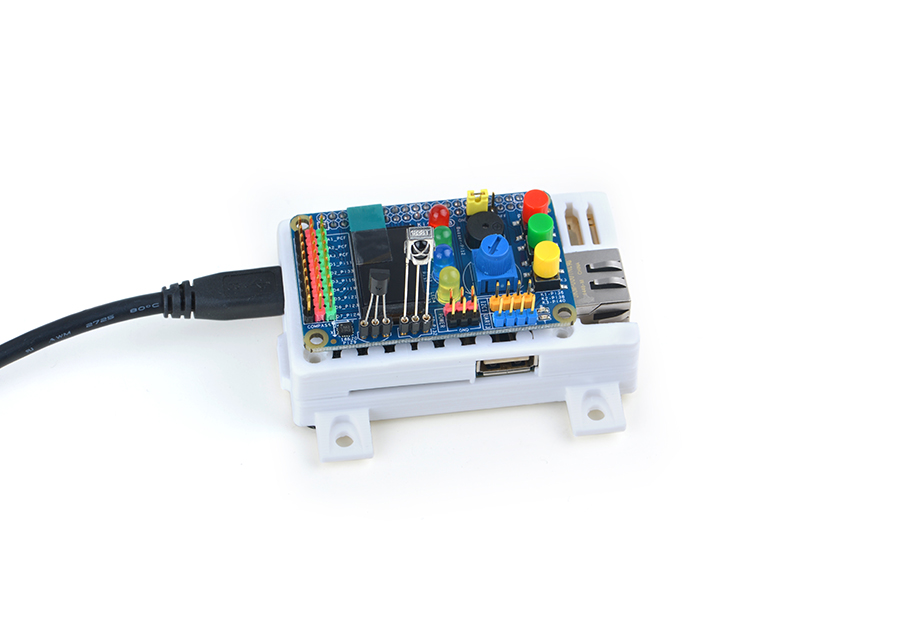
5.2 Compile Test Program
Login to the matrix hub and enter the nanopi2 branch
$ cd matrix $ git checkout nanopi2
Compile the Matrix code
$ make CROSS_COMPILE=arm-linux- clean $ make CROSS_COMPILE=arm-linux- $ make CROSS_COMPILE=arm-linux- install
Note: make sure to install the cross compiler "arm-linux-gcc-4.9.3" on your PC, which is used to compile files for the NanoPi 2.
Generated library files are under the "install/lib" directory. The test program is under the "install/usr/bin" directory.
The modules are under the "modules" directory. The driver's source code is in github: https://github.com/friendlyarm/linux-3.4.y.git
5.3 Copy Test Program
Insert a TF card which is flashed with Debian into a Linux host and mount its boot and rootfs sections.
We assume the rootfs is mounted to /media/rootfs then run the following commands to copy the module, library and test program to the card.
$ cp modules /media/rootfs/ -r $ cp install/lib/* /media/rootfs/lib/ -d $ cp install/usr/bin/* /media/rootfs/usr/bin/
5.4 Test LCD
Insert this TF card to your NanoPi 2 Fire, power on and run the following commands.
$ cd /modules $ insmod fbtft_device.ko name=matrix-st7735s gpios=dc:58,reset:63,cs:59 $ sudo FRAMEBUFFER=/dev/fb-st7735s startx &
"fbtft_device" is the LCD's driver.After it is loaded the LCD will be initialized.
"startx" sets the LCD to the output device. Here is what you should expect:

5.5 测试蜂鸣器
将蜂鸣器的跳线接到ON,执行以下命令控制蜂鸣器:
$ cd /modules $ insmod matrix_pwm.ko $ matrix-buzzer
运行效果如下:

可以听到蜂鸣器在响,默认输出的PWM频率为1KHz,占用比为50%。
5.6 控制LED
| LED | CPU GPIO | Linux索引号 | 物理索引号 |
| 红色LED1 | GPIOB28 | 60 | 28 |
| 绿色LED2 | GPIOC7 | 71 | 31 |
| 蓝色LED3 | ALIVEGPIO3 | 163 | 37 |
| 黄色LED4 | GPIOC11 | 75 | 35 |
以LED1为例,执行以下命令控制LED:
$ cd /sys/class/gpio/ $ echo 60 > export $ echo out > gpio60/direction $ echo 1 > gpio60/value
1表示点亮LED1,0表示熄灭LED1。
5.7 读按键值
| 按键 | CPU GPIO | Linux索引号 | 物理索引号 |
| KEY1 | GPIOC10 | 74 | 36 |
| KEY2 | GPIOC12 | 76 | 38 |
| KEY3 | GPIOC9 | 73 | 40 |
以KEY1为例,执行以下命令读取按键值:
$ cd /sys/class/gpio/ $ echo 74 > export $ echo in > gpio74/direction $ cat gpio74/value
当KEY1按下时value=0,KEY1弹起时value=1。
5.8 测试AD转换
执行以下命令获得Channel0的AD转换值:
$ cd /modules $ insmod pcf8591.ko $ matrix-adc
5.9 测试指南针
执行以下命令获得当前方向:
$ matrix-compass5.10 测试温度传感器
执行以下命令操作温度传感器:
$ cd /modules $ insmod w1-gpio.ko $ insmod w1-gpio-board.ko gpio=72 $ matrix-temp_sensor
gpio=72表示使用引脚GPIOC8,72是该引脚在Linux里的索引号。
运行效果如下:
![]()
5.11 测试红外接收头
执行以下命令操作红外接收头:
$ cd /modules $ insmod matrix_ir_recv.ko gpio=92
gpio=92表示使用引脚GPIOC28,92是该引脚在Linux里的索引号。
成功加载驱动后,会在/dev/input/目录下生成一个event设备节点,这里假设生成的设备节点为event1。
开源软件input-utils可以读取event设备的数据,它的使用方法如下:
$ apt-get install input-utils $ input-events 1
1表示读设备节点event1。
5.12 通过Python控制
6 与NanoPi连接使用
7 与Tiny4412连接使用
8 与RaspberryPi连接使用
9 与Arduino连接使用
10 相关资料
- [Schematic](Matrix - Compact Kit B-Schematic.pdf)
